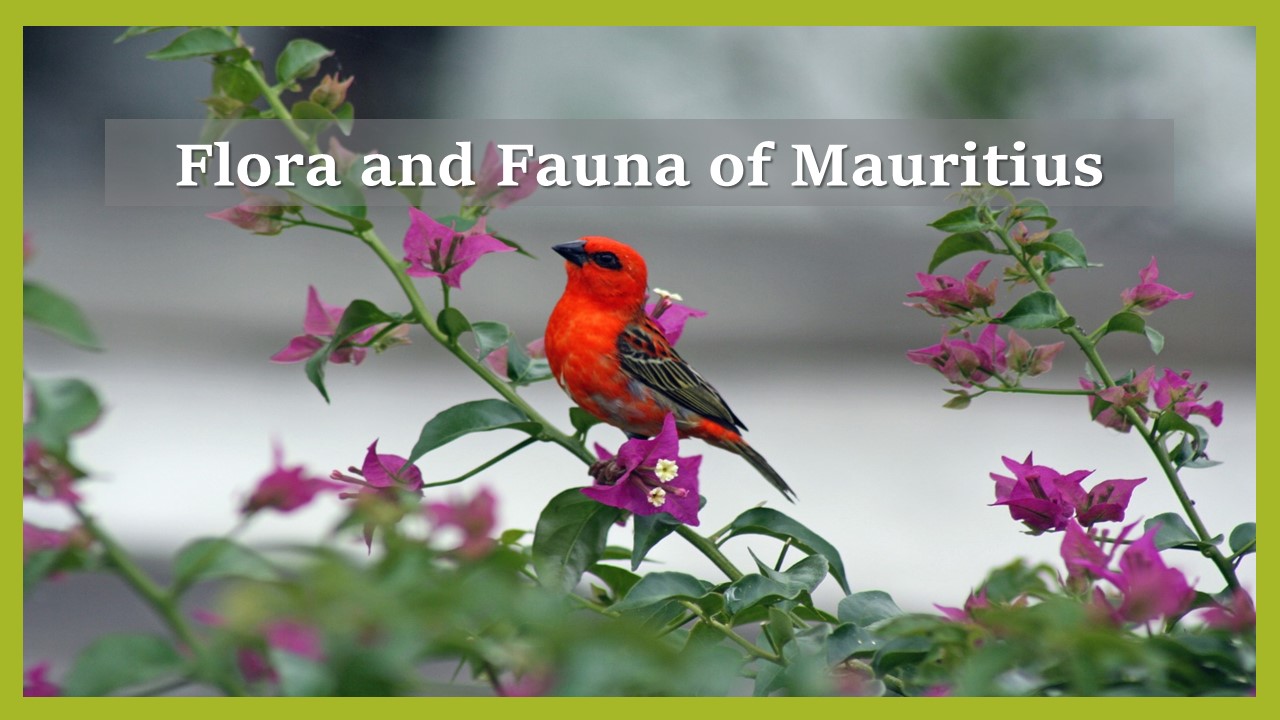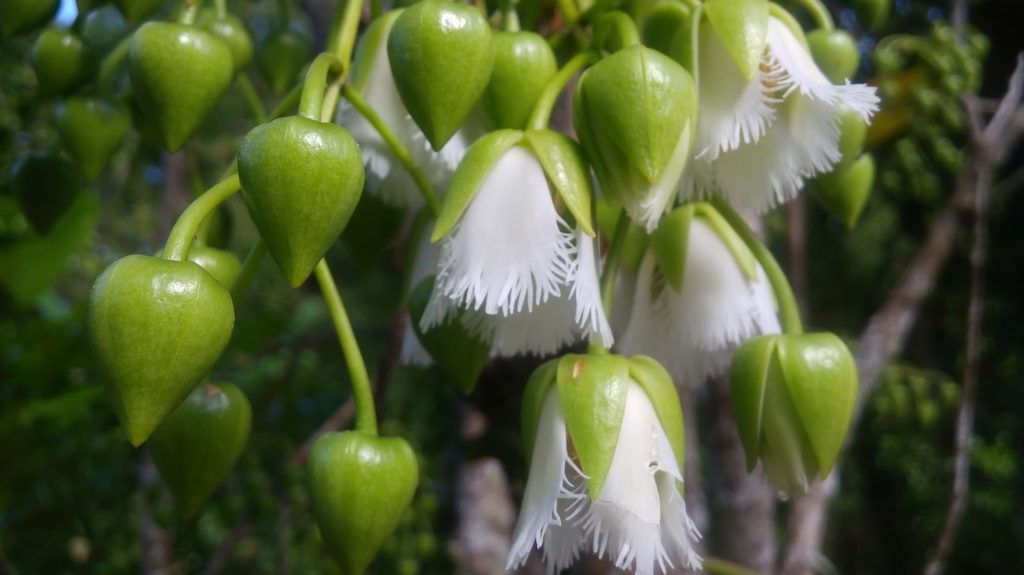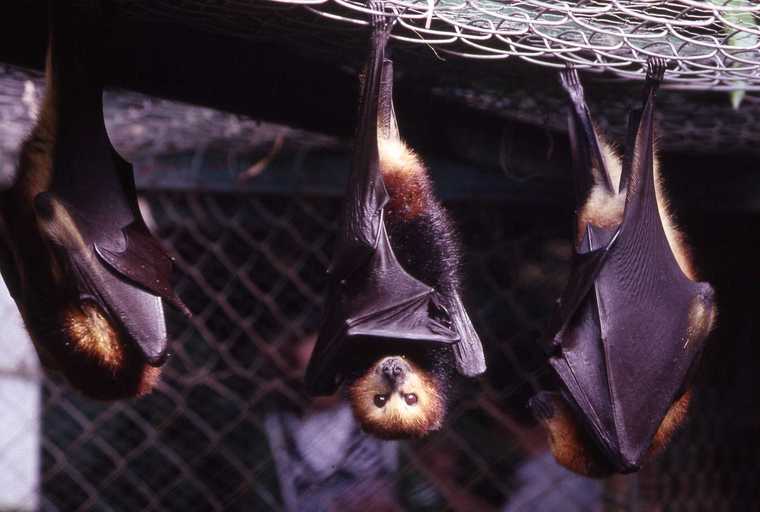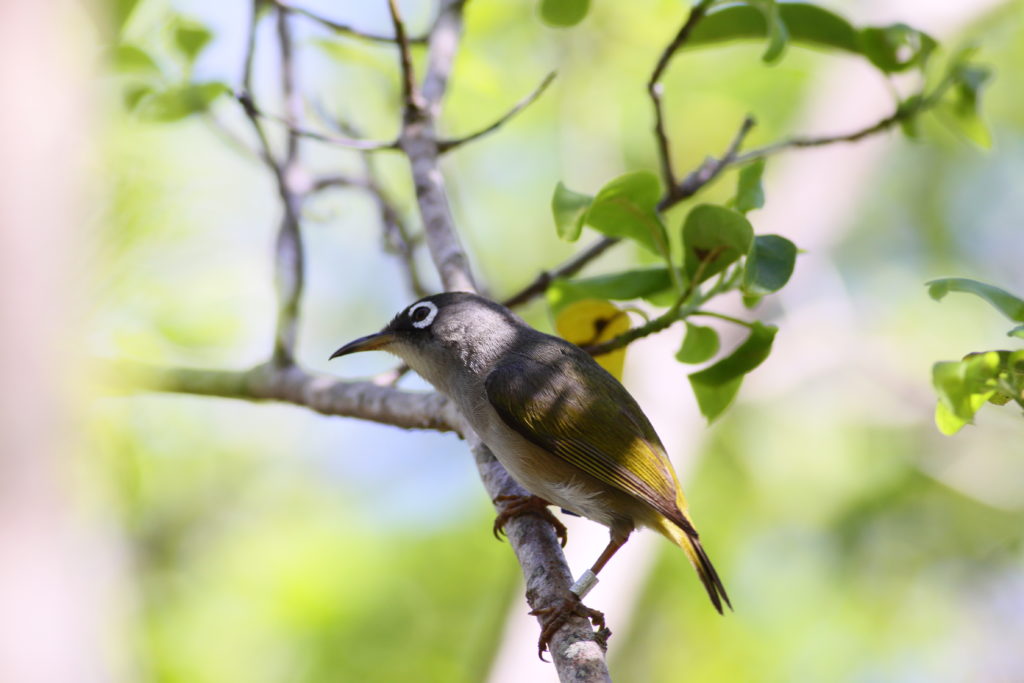Biodiversity (Flora and Fauna) of Mauritius
Posted on April 28, 2020 by Yonature

Biodiversity refers to the variability that exists amongst all living sources and their complex interactions in different ecosystems. Famous as the land of the Dodo, the biodiversity of Mauritius is quite rich providing key raw materials and essential ecosystem services.
Mauritius lies in the Madagascar and Indian Ocean Islands biodiversity hotspot, designated by the IUCN as ‘Center of Plant Diversity’. Many of the plants and animals that live in Mauritius are endemic. That is, they do not exist anywhere else in the world (such as the Dodo bird) except in Mauritius. This is because the island has a diverse topography, is small in size and has a tropical climate.
Flora of Mauritius
Deforestation in Mauritius
When people discovered Mauritius, trees like Ebony and flowers like Hibiscus genevii covered most of the surface area. Years and years of weathering of the remains of the volcanic caldera of the island created a fertile haven for plants to grow. Unfortunately, as humans settled on the island, they also cleared vast expanses of forests for agriculture and development. Over the years, deforestation only aggravated. Today, less than 2% of the original forest remain on mountain ridges and offshore islets.
Number of plants in Mauritius
So, right now, 691 species of plants grow on Mauritius amongst which 273 are island endemics. There are also150 plant species that grow in the Mascarene region only (that is the islands Mauritius, Rodrigues and Reunion). Of these, 141 flowering Mascarene indigenous plants are ‘critically endangered’, 55 species are ‘endangered’ and 98 species are ‘vulnerable’. And unfortunately, 61 species are already extinct.
Where are the endemic plants/trees in Mauritius?
Today, most of the native plants and trees of Mauritius basically grow in the remnant dense forests and atop mountains. Others are protected in nature reserves and botanical gardens. Some examples of endemic plants in Mauritius are Trochetia boutoniana (Boucle d’oreille) and Elaeocarpus bojeri (Bois dentelle). With its delicate pink flowers, Trochetia is also the national flower of Mauritius since 1992 when Mauritius officially became a Republic.
Many of these beautiful plants also grow in the SSR Botanical Garden in the north, at the Vallée d’Osterlog Endemic Garden in the south and the Arboretum at Curepipe. As for endemic trees, some of the world-famous ebony trees, Bois Jaune and Bois de Bitte germinate in the Black River Gorges National Park and offshore islets like Ile aux Aigrettes.

Animals of Mauritius
As a remote island in the Indian Ocean, only small animals like birds, insects and reptiles that fly or swim made it here. The Dutch, French and British eventually introduced animals accidentally (e.g. rats) and purposefully (e.g. cattle) over the years.
Native reptiles in Mauritius
In terms of numbers, there were initially 17 species of reptiles in Mauritius, but today only 12 remain. Also, of these, 11 species are endemic with 7 living on the offshore islets. These ones survived as there were no introduced animals like rabbits and goats there. Examples of these reptiles include the brightly coloured day geckos Phelsuma, the harmless Keel-scaled boa and the Telfair’s Skink.
Endemic mammals in Mauritius
As for mammals, there is just one species: the fruit-eating bat or the Mauritian Flying Fox. While Pteropus niger lives on the mainland of Mauritius, Pteropus rodricensis thrives on Rodrigues Island. The fruit-eating bats are majestic creatures with golden fur that fly around at dusk in search of food (fruits, nectar and pollen).

Image by Simon Tonge from CalPhotos
Native butterfly, land snails
Additionally, 41 species of endemic butterfly species exist in Mauritius.
Also, of the 125 land snail species, 43 species have gone extinct.
Native birds in Mauritius
To date, there are 30 native species of land birds in Mauritius. 9 species are in low populations including the Pink Pigeon, Mauritian Kestrel and the Mauritius Olive-White eye.

Where are the endemic animals in Mauritius?
Though there are not many endemic animal species in Mauritius, some amazing creatures have inhabited the island. It includes the Dodo bird, the Broad Billed Parrot, the Mauritius Blue Pigeon and the real Giant Tortoises. Sadly, all of them are now extinct.
The few species that remain are highly protected in nature reserves on offshore islets such as Round Island, Serpent Island and Flat Island. Some (especially birds) also still live in the dense native forests of the Black River Georges National Park.
Threats to Mauritian biodiversity
Human threats
As it is, the biodiversity of the island faces numerous dangers that prevent the regeneration of plants and put animals at risk.
For instance, as a rapidly growing nation, unplanned and unsustainable development jeopardizes the fragile environment of Mauritius. At times, even protected areas are wrongly managed. This thus leads to more economic investment that compromises conservation goals.
Even the endangered fruit-eating bats were considered for culling under pressure from fruit producers in the past [1]. Recently, the government leased many of the offshore islet nature reserves for tourism activities. By so doing, predators can infiltrate the islets and even tourists can damage the habitats of native animals and plants.
Although stringent legislation regarding biodiversity preservation exits, oftentimes it is only on paper.
Ecological threats
One of the most important ecological threat to the biodiversity of Mauritius is the presence of invasive species. Whether they are plants or animals, they compete with native species for food and space. For instance, the Chinese Guava (Psidium cattleianum), an exotic plant, competes with endemic plants for space and nutrients in the dense forests of Mauritius. In this way, it prevents the regeneration and growth of native plant species.
Likewise, introduced animals like pigs trample on the soil thereby destroying seedlings. They also encourage the growth of invasive species by dispersing the seeds. Other animals like monkeys destroy the flowers and fruits of plants and trees further reducing their growth success rate.
Generally, all the above-mentioned points form part of any natural ecosystem. Yet, in Mauritius, small population sizes and habitat fragmentation threaten the survival of the native species. At the same time, frequent cyclones also destroy the understorey forests and habitats of animals. And sometimes, diseases from alien species also kill them.
How is Mauritius protecting its biodiversity?
The government of Mauritius has taken important steps to preserve the biodiversity of the island both for ecological and socio-economic reasons.
In-situ conservation of native species is carried out where seeds are propagated. The Conservation Management Areas (CMA) at the Black River Georges National Park are also supervised and the protected area network in the PAN (Protected Area Network) Project has been expanded. Weeding frequently takes place in the protected forests.
As for animals, captive breeding and introduction into the wild programmes are carried out in addition to predator control and native habitat restoration.
References
- Florens, F.V., 2013. Mauritius threatens its own biodiversity. Nature, 493(7434), pp.608-609.
Category: Environment Tags: Biodiversity of Mauritius, bois dentelle, critically endangered species in mauritius, flora and fauna of Mauritius, how biodiversity is managed in Mauritius, list of endemic animals Mauritius, list of endemic plants Mauritius, mauritius olive white-eye, protection of biodiversity Mauritius, threats to biodiversity of Mauritius, what animals are found in Mauritius, what plants are found in Mauritius, where to see native animals in Mauritius, where to see native plants in Mauritius, wildlife of Mauritius
5 Comments on “Biodiversity (Flora and Fauna) of Mauritius”
Leave a Reply Cancel reply
Get News by Email!
Categories
Search
Find Us
contact[at]yonature[dot]com
Site Links
Secure Site
Get News by Email!
Copyright © 2025 · All Rights Reserved · Yo Nature
Theme: Natural Lite by Organic Themes · RSS Feed

Pingback: 10 Positive and Negative Effects of Landslide 2022 - Environment Go!
Pingback: Dodo Bird of Mauritius: From Discovery to Extinction - Yo Nature
Pingback: The Coastal and Marine Biodiversity of Mauritius - Yo Nature
Pingback: Offshore islets of Mauritius: National Parks and Nature Reserves - Yo Nature
Pingback: 10 common medicinal plants in Mauritius - Yo Nature